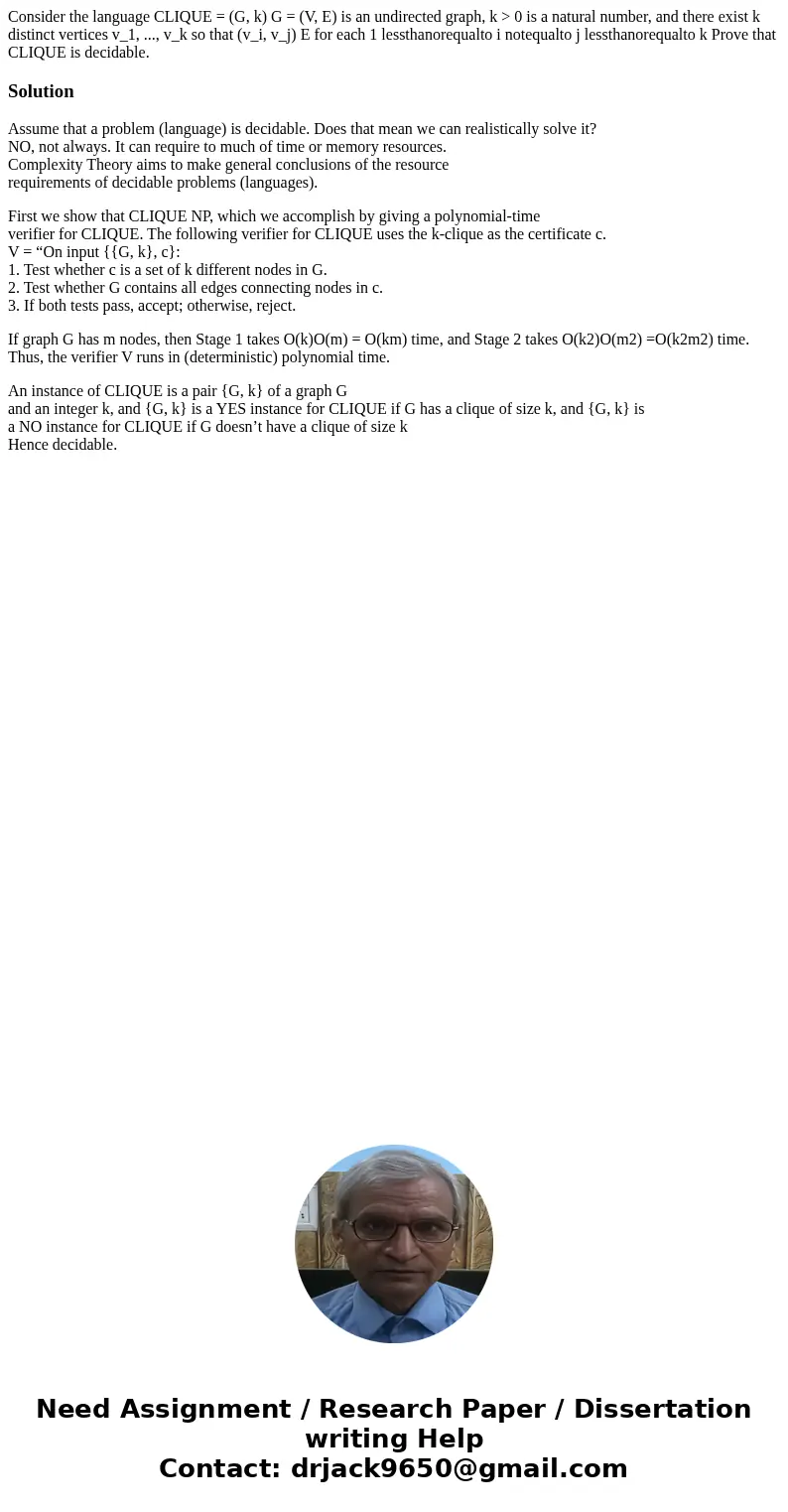Consider the language CLIQUE G k G V E is an undirected gr
Solution
Assume that a problem (language) is decidable. Does that mean we can realistically solve it?
NO, not always. It can require to much of time or memory resources.
Complexity Theory aims to make general conclusions of the resource
requirements of decidable problems (languages).
First we show that CLIQUE NP, which we accomplish by giving a polynomial-time
verifier for CLIQUE. The following verifier for CLIQUE uses the k-clique as the certificate c.
V = “On input {{G, k}, c}:
1. Test whether c is a set of k different nodes in G.
2. Test whether G contains all edges connecting nodes in c.
3. If both tests pass, accept; otherwise, reject.
If graph G has m nodes, then Stage 1 takes O(k)O(m) = O(km) time, and Stage 2 takes O(k2)O(m2) =O(k2m2) time. Thus, the verifier V runs in (deterministic) polynomial time.
An instance of CLIQUE is a pair {G, k} of a graph G
and an integer k, and {G, k} is a YES instance for CLIQUE if G has a clique of size k, and {G, k} is
a NO instance for CLIQUE if G doesn’t have a clique of size k
Hence decidable.

 Homework Sourse
Homework Sourse